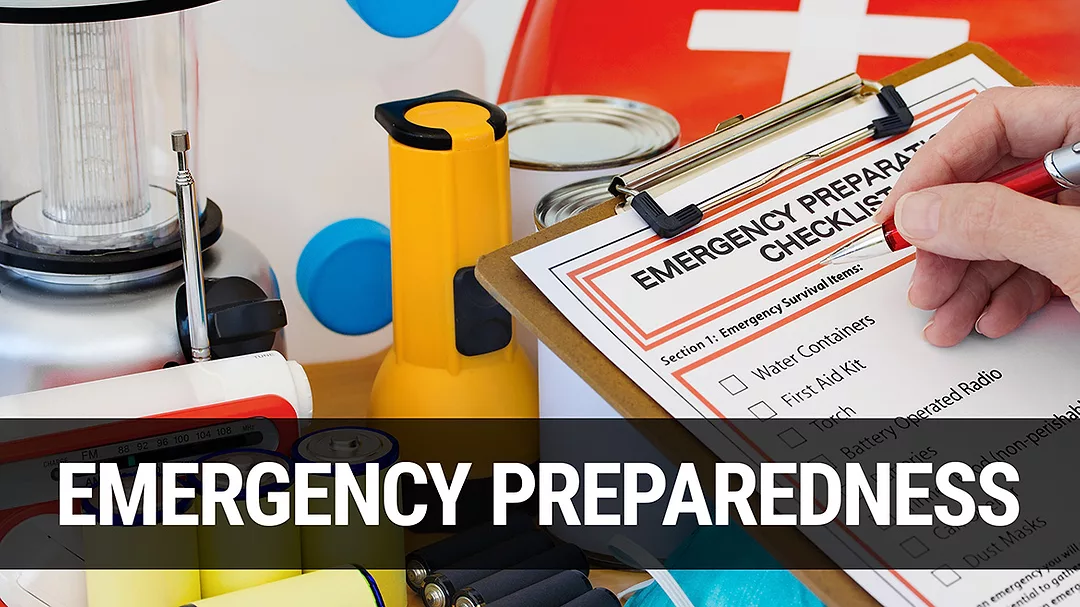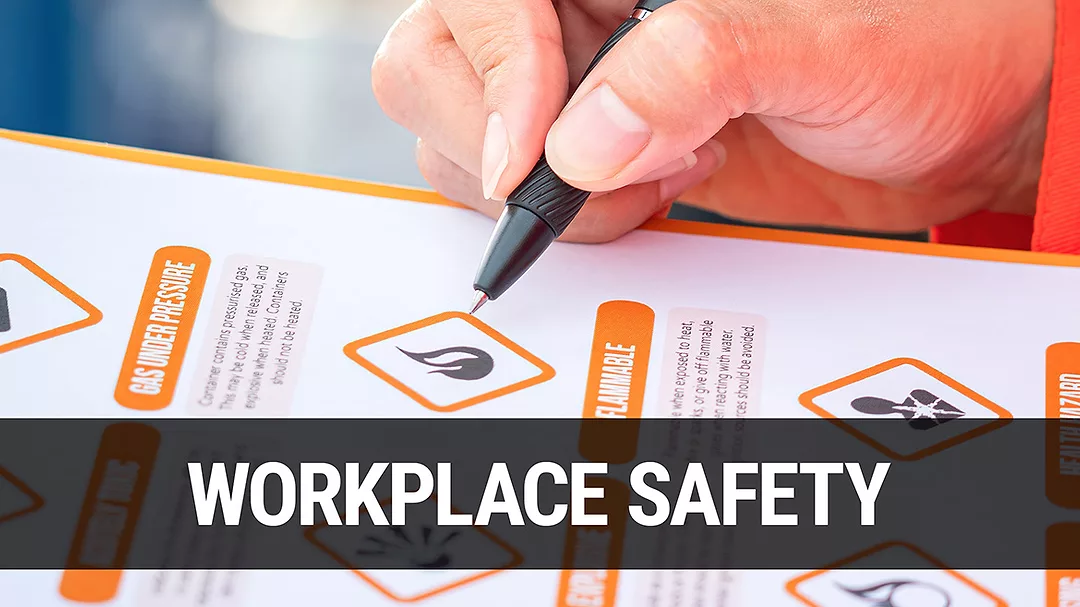Best Practices for Crisis and Disaster Response
Preparing for the Unexpected

Gizem Gecim / iStock via Getty Images Plus

Pixsooz / iStock via Getty Images Plus

MF3d / E+ via Getty Images

Olemedia / iStock via Getty Images Plus

Thank you for your assistant / iStock via Getty Images Plus

yacobchuk / iStock via Getty Images Plus
Spring is a time of renewal. Days become longer, and warmer weather brings the vibrant color and fresh scents of early blooms, along with days perfect for activities like birdwatching, planting gardens and nature walks. However, for those of us in the chemical industry — especially facilities on the Gulf and East Coast — spring represents the time to renew our hurricane preparedness plans.
But if recent years have taught us anything, it’s that unexpected events and potential threats are numerous. We can be assured that hurricanes aren’t the only disasters we need to prepare for. The costliest and most disruptive disasters of 2024 included hurricanes but also winter storm events, tornado outbreaks and massive flooding. California is unfortunately no stranger to wildfires, but the Los Angeles-area wildfires earlier this year brought deadly flames to the doorsteps of areas that never expected them.
In addition to natural disasters, there are a growing number of man-made threats. Today, companies in the chemical industry must consider scenarios that involve potential terrorist activities, improvised explosive devices, drones, or even personnel or executive crimes and misconduct. Cybercriminals also frequently target chemical-related businesses, not only for their data but also for the hazardous materials they handle, which can pose serious threats to public safety and national security.
Chemical distribution experts are entrusted to safely, reliably, responsibly and sustainably move the chemical products essential to our daily lives, including those produced by the paint and coatings industry and many others. With the threats facing chemical manufacturing, distribution and handling facilities constantly changing, members of the Alliance for Chemical Distribution (ACD) recognize the importance of being prepared for a crisis.
Established in 1991, ACD Responsible Distribution™ is a comprehensive set of environmental, health, safety, security and sustainability standards within the chemical industry. Responsible Distribution provides a framework that demands continuous improvement in every phase of chemical storage, handling, transportation and disposal. A critical part of ACD’s Responsible Distribution program are the emergency response and public preparedness requirements.
Under Code VII of Responsible Distribution, ACD members are required to document and regularly review a variety of preparedness policies and procedures that should serve as best practices for any organization handling chemicals. As we prepare for the 2025 hurricane season and other potential threats, we’d like to take this time to share some emergency preparedness best practices with our paint and coatings partners in the chemical supply chain.
Crisis Response: Prepare, Practice and Prepare Again
Natural and man-made disasters can lead to spill events that require large-scale evacuation to ensure community safety and contain the health impacts to the public, first responders and those involved in cleanup operations. Preparing a comprehensive crisis response plan for such a scenario can be overwhelming. This is particularly true for small businesses, in which crisis preparedness coordinators find themselves juggling this critical task along with other important responsibilities within the company.
While this list in no way represents all the procedures needed to manage a potential chemical facility crisis, here are some important considerations.
Plan for Potential Incidents Before They Happen
- Federal regulations have requirements for prevention and response in the face of natural disasters. Ensure you are aware of the regulations that impact your policies and procedures.
- Create a crisis response team and verify everyone knows exactly what their role is and what is expected of them in the event of an incident.
- Ensure awareness of the personnel training levels available and/or required for your facility type, and confirm that your in-house response team has adequate hazard communication training.
- Develop and maintain relationships with local governments and regulatory agencies. Secure designation as an essential facility to ensure you can access the site as soon as possible after a natural disaster.
- Get to know your local media outlets, emergency planning committee (if applicable), and the local hospital where affected employees would go for treatment. It’s a good practice to make a list of these and other external entities you will need to coordinate with in the case of a significant event.
- Remember that pre-season and pre-storm weather analysis isn’t always accurate, and any storm can be dangerous if the conditions are right. Prepare as though you’re facing a significant event.
- Consider what supplies you’ll need, such as personal protective equipment (PPE), and ensure they are on hand.
- Know the chemicals you are working with. Safety data sheets might not be as helpful as you think, especially in an emergency. Other resources, such as the National Institute for Occupational Safety and Health Pocket Guide to Chemical Hazards, provide detailed information but only for pure chemicals. If you’re working with a blend, for example, no information will be available for that particular combination.
- Ensure you have adequate insurance coverage for property, inventory and potential business interruption.
Conduct Robust Safety Drills
- Tabletop drills are one approach to testing a preparedness plan, but ACD members are encouraged to regularly carry out full-scale safety drills and work closely with their teams, emergency services and local communities to prepare for any incidents that could arise.
- Realize that people may not always know how they will react in an emergency. A safety drill can help employees understand the level of stress involved and better prepare for the dangerous scenarios in which they will have to operate.
- Communication — and the lack of ability to communicate — is often a major point of failure in response efforts. During a natural disaster, utilities such as water, electricity, internet and cellular service may be lost all at once.
- Households, businesses, and even governments may be out of commission. Pressure testing your plan to understand where it can fail and how to rectify it is critical.
- After the drill, conduct a thorough debriefing and develop an approach to adapt the crisis plan as needed.
Keep Preparedness Plans Up to Date
- Ensure your crisis response plan reflects the most current contact information and resources. Whenever a team member leaves, updates their contact details, or when there are changes in emergency response services, revise your plan accordingly. Verify and update emergency response numbers during regular drills and internal audits, as these may change over time.
- Threats are constantly changing. Each year, review your assessments of potential scenarios and ensure your plan meets the need.
- Make sure new employees are properly trained, used or expired PPE and other equipment are replaced, and all contingencies are in place.
A Note on Cyber Preparedness
While traditional chemical industry crisis preparations focus on how to prevent or minimize a spill, in today’s digital era, tools such as the internet, mobile devices and social media platforms enable constant global communication. These technologies also present new opportunities for malicious actors to target businesses, steal sensitive information and disrupt operations. As the world becomes more interconnected, the chemical distribution sector must remain vigilant against evolving cybersecurity threats and fraud attempts to protect themselves, their customers and their communities.
Some of the advanced tactics that keep the industry on high alert include:
- Phishing and spoofing attempts. Cybercriminals have become increasingly adept at impersonating legitimate companies to purchase chemical products, often employing artificial intelligence (AI). Employees should be trained to recognize unusual requests, ask pertinent questions, and exercise due diligence to safeguard operational integrity.
- Trade fraud. Numerous companies have reported fraudulent activities involving the sale of chemicals with falsified country-of-origin labels. Malicious actors are repackaging and relabeling products from China and other nations subject to U.S. tariffs or duties.
- Chemical Facility Anti-Terrorism Standards (CFATS). CFATS was the first regulatory program to explicitly focus on physical and cybersecurity at chemical sites. Since its expiration in 2023, facilities are left to manage evolving threats on their own. More than 89.5 million people live or work within two miles of a high-risk chemical facility, and the U.S. Department of Homeland Security’s Cybersecurity and Infrastructure Security Agency has not conducted terrorist vetting for more than 100,000 personnel seeking access to restricted areas.
The growing number of cyber challenges underscores the importance of strong passwords, multifactor authentication, software updates and robust antimalware protection. By staying informed on evolving tactics and ensuring preparedness plans account for cyber threats, companies can build a strong foundation for countering even the most complex cyberattacks.
Comprehensive preparedness plans help companies in the chemical industry remain vigilant against today’s and tomorrow’s evolving threats. This spring, take time to make, practice, or renew your preparedness plan to ensure the continuation of safe and secure operations.
Looking for a reprint of this article?
From high-res PDFs to custom plaques, order your copy today!







